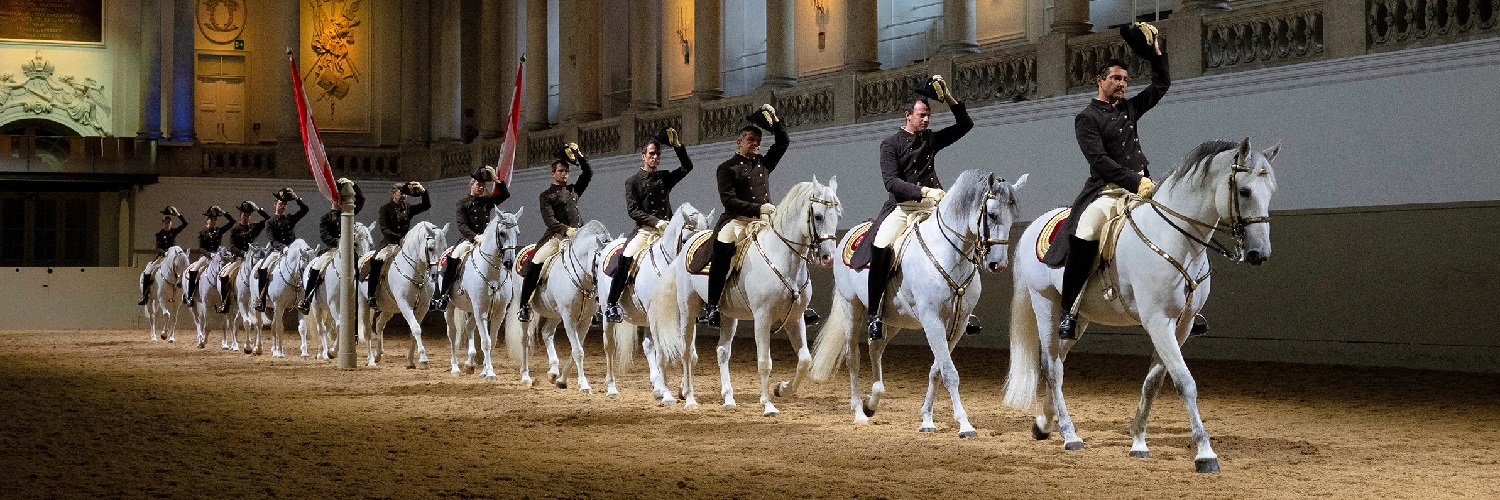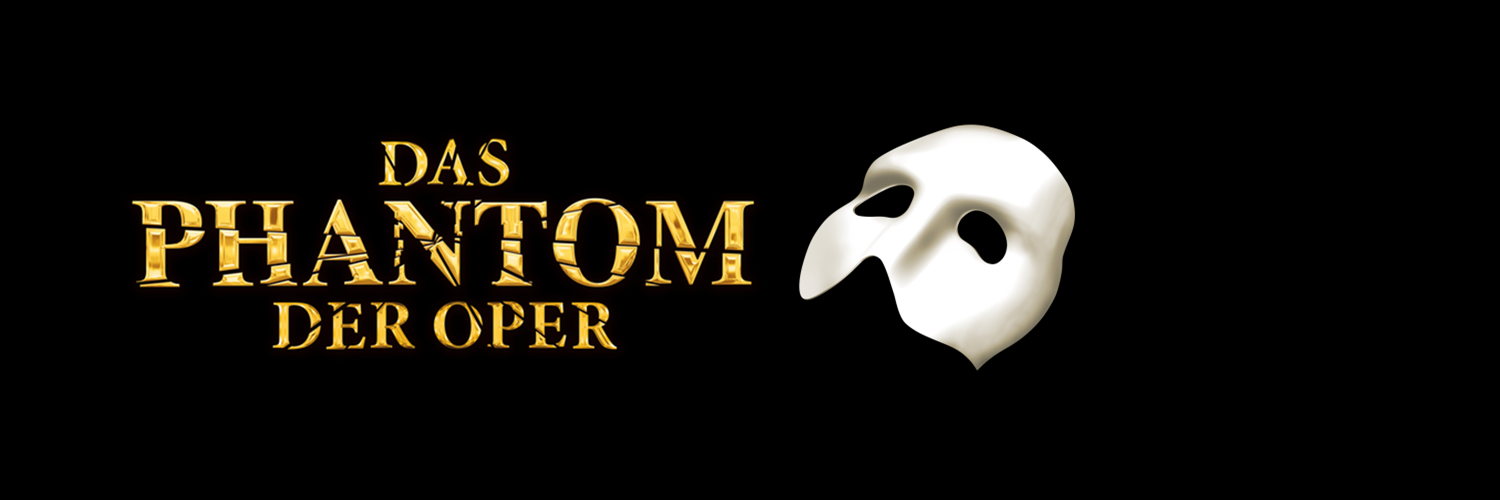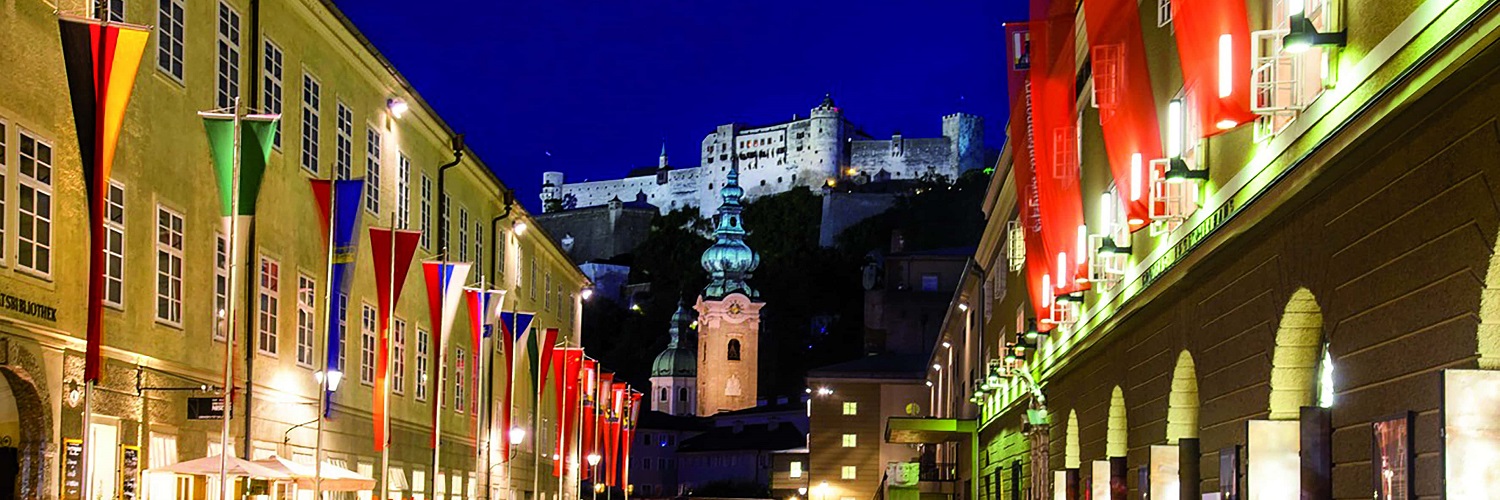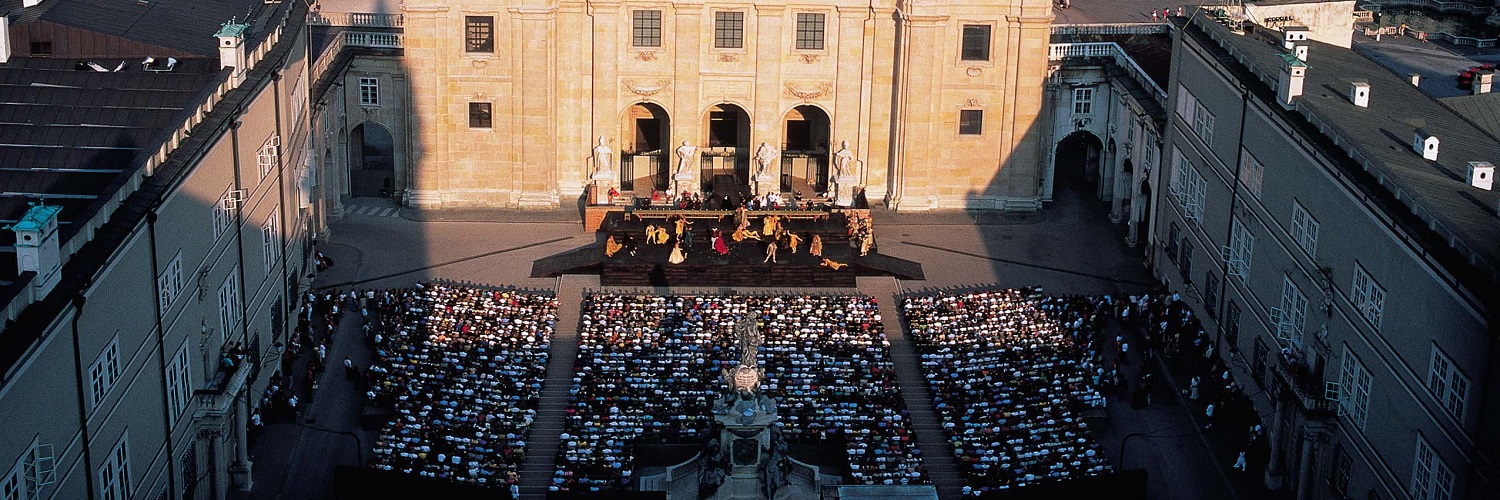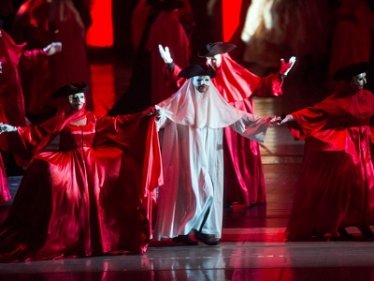Un ballo in maschera - Schedule, Program & Tickets
Un ballo in maschera
[A Masquerade Ball]
Melodrama in three acts
Libretto by Antonio Somma based on the drama "Gustave III" by Eugène Scribe
First performed on February 17, 1859 in Rome
Premiered at the Deutsche Oper Berlin on December 19, 1993
recommended from 13 years
3 hours / One break
In Italian with German and English surtitles
Introduction: 45 minutes before the start of the performance in the foyer on the right
King Gustav III. holds his morning audience as if it were a theatrical performance. The page Oscar presents the king with the guest list of an upcoming masked ball. Gustaf then discovers the name of Amelia, the wife of his best friend René Anckarström, whom he secretly loves. A conspiracy against the king is brewing. René warns him, but the king underestimates the danger. He also doesn't take seriously the prophecy of the fortune teller Ulrika, who tells him that he will be killed by the one who shakes his hand first, since it is his friend René Anckarström who greets him with a handshake. When Gustaf and Amelia profess their love at the execution site at midnight, René unexpectedly appears to warn his friend again. He swaps cloaks with the king so that he can escape unnoticed and promises to escort the veiled stranger back to the city. The conspirators come and attack the supposed king. René reveals himself. His wife, Amelia, throws herself among the combatants, dropping her veil. Mocked as a betrayed husband, René wants to join the conspirators. When the page brings Oskar the king's invitation to the masked ball, he decides to turn the ball into a dance of death for Gustaf, unaware that the king has already decided against love and in favor of duty. When he says goodbye to Amelia, he is shot by René.
UN BALLO IN MASCHERA is considered a prime example of Verdi's new aesthetics of verità, which develops a broad spectrum of musical and dramatic facets. The tragic love affair between King Gustaf III. and Amelia, who resembles a fate, is contrasted with the radiant court atmosphere, represented above all by the page Oskar, as a counterpoint. The dramatic climax is the finale of the third act: at the court society's masked ball, the conspirators, Count René Anckarström, also appear, and the two storylines intertwine. The catastrophe unfolds against the background of elegant dance music. The final encounter between Amelia and Gustaf is accompanied by a stylized minuet, interrupted only once by anguished music when Amelia fears for her lover's life. The feelings of the two main characters, which alternate between desire and pangs of conscience, are reflected in the diversity of the musical design: musical contrasts, sharp punctuation and syncopation express the intensity of the feelings. The drama takes place above all in the music.
Götz Friedrich and his two outfitters also make it visible and tangible on stage with their stage design and sophisticated personal direction.
Musikalische Leitung
Yi-Chen Lin
Inszenierung
Götz Friedrich
Bühne, Kostüme
Gottfried Pilz
Isabel Ines Glathar
Chöre
Jeremy Bines
Chor der Deutschen Oper Berlin
Choreografische Mitarbeit
Andria Hall
Gustaf III, König von Schweden
Yosep Kang
Graf René Anckarström
Thomas Lehman
Amelia, seine Gattin
Anna Pirozzi
Ulrika Arvedson, Wahrsagerin
Olesya Petrova
Oscar, Page
Meechot Marrero
Christian, ein Seemann
Samueol Park
Graf Horn
Patrick Guetti
Graf Ribbing
Tyler Zimmerman
Der Oberste Richter
Jörg Schörner
Diener
Patrick Cook
Orchester
Orchester der Deutschen Oper Berlin
Tanz
Opernballett der Deutschen Oper Berlin
Subject to change.
Melodrama in three acts
Libretto by Antonio Somma based on the drama "Gustave III" by Eugène Scribe
First performed on February 17, 1859 in Rome
Premiered at the Deutsche Oper Berlin on December 19, 1993
recommended from 13 years
3 hours / One break
In Italian with German and English surtitles
Introduction: 45 minutes before the start of the performance in the foyer on the right
King Gustav III. holds his morning audience as if it were a theatrical performance. The page Oscar presents the king with the guest list of an upcoming masked ball. Gustaf then discovers the name of Amelia, the wife of his best friend René Anckarström, whom he secretly loves. A conspiracy against the king is brewing. René warns him, but the king underestimates the danger. He also doesn't take seriously the prophecy of the fortune teller Ulrika, who tells him that he will be killed by the one who shakes his hand first, since it is his friend René Anckarström who greets him with a handshake. When Gustaf and Amelia profess their love at the execution site at midnight, René unexpectedly appears to warn his friend again. He swaps cloaks with the king so that he can escape unnoticed and promises to escort the veiled stranger back to the city. The conspirators come and attack the supposed king. René reveals himself. His wife, Amelia, throws herself among the combatants, dropping her veil. Mocked as a betrayed husband, René wants to join the conspirators. When the page brings Oskar the king's invitation to the masked ball, he decides to turn the ball into a dance of death for Gustaf, unaware that the king has already decided against love and in favor of duty. When he says goodbye to Amelia, he is shot by René.
UN BALLO IN MASCHERA is considered a prime example of Verdi's new aesthetics of verità, which develops a broad spectrum of musical and dramatic facets. The tragic love affair between King Gustaf III. and Amelia, who resembles a fate, is contrasted with the radiant court atmosphere, represented above all by the page Oskar, as a counterpoint. The dramatic climax is the finale of the third act: at the court society's masked ball, the conspirators, Count René Anckarström, also appear, and the two storylines intertwine. The catastrophe unfolds against the background of elegant dance music. The final encounter between Amelia and Gustaf is accompanied by a stylized minuet, interrupted only once by anguished music when Amelia fears for her lover's life. The feelings of the two main characters, which alternate between desire and pangs of conscience, are reflected in the diversity of the musical design: musical contrasts, sharp punctuation and syncopation express the intensity of the feelings. The drama takes place above all in the music.
Götz Friedrich and his two outfitters also make it visible and tangible on stage with their stage design and sophisticated personal direction.
Musikalische Leitung
Yi-Chen Lin
Inszenierung
Götz Friedrich
Bühne, Kostüme
Gottfried Pilz
Isabel Ines Glathar
Chöre
Jeremy Bines
Chor der Deutschen Oper Berlin
Choreografische Mitarbeit
Andria Hall
Gustaf III, König von Schweden
Yosep Kang
Graf René Anckarström
Thomas Lehman
Amelia, seine Gattin
Anna Pirozzi
Ulrika Arvedson, Wahrsagerin
Olesya Petrova
Oscar, Page
Meechot Marrero
Christian, ein Seemann
Samueol Park
Graf Horn
Patrick Guetti
Graf Ribbing
Tyler Zimmerman
Der Oberste Richter
Jörg Schörner
Diener
Patrick Cook
Orchester
Orchester der Deutschen Oper Berlin
Tanz
Opernballett der Deutschen Oper Berlin
Subject to change.
There are no products matching the selection.

